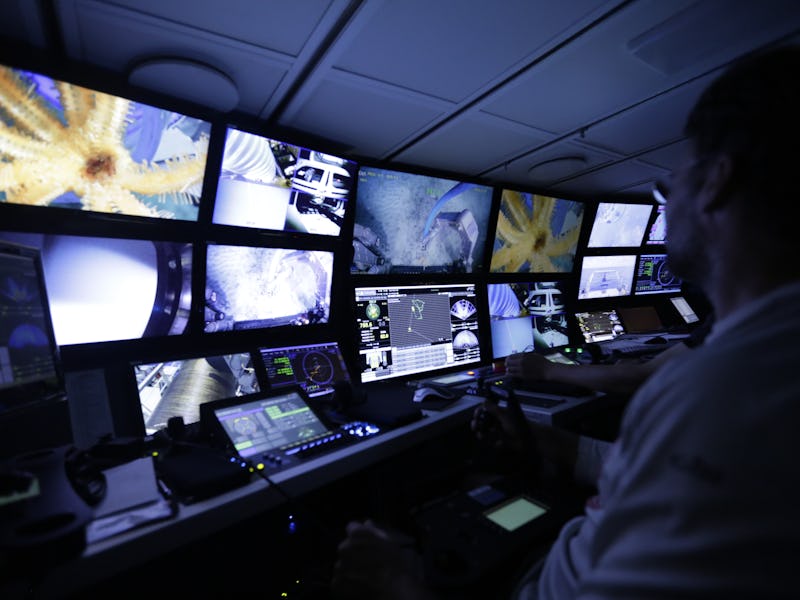SuBastian Will Become the Hubble of the Deep
A series of sea trials indicates that researchers have created a singularly powerful ROV.

SuBastian, the remotely controlled robot hanging out in a trench off the coast of Guam, has been sending back colorful dispatches from the deep since submerging on July 19. The ROV is exploring areas no human being has ever seen during what amounts to a warm-up. The researchers aboard the Falkor are testing the underwater drone’s limits and discovering it doesn’t have very many.
SuBastian was built to dive as far down as 15,000 feet — and stay down, in theory at least, indefinitely. With each dive, the Schmidt Ocean Institute team behind the project pushes SuBastian deeper and leaves it down for longer. They’re currently up to dives as long as eight hours and they’ve re-calibrate the scientific instruments aboard for great accuracy. The marine technicians are also picking up things with the manipulator arm, practicing using the suction sampler to collect rocks, and testing high-definition cameras.
“We’re very excited, we’ve been able to complete 15 dives to date,” team member Carlie Wiener told Inverse. “We’re increasing our depths on every dive. On Friday, we hit just over 4,500 meters [about 14,800 feet], so that was a big day for our team. To know that SuBastian works at the depths that it was built to work at is very exciting.”
SuBastian passes 4,500 meters for the first time.
The succession of dives ensures not just that SuBastian’s systems are working properly, but that the ROV pilot and various marine technicians know how to drive the vehicle and get in the necessary hours of practice. These deep dives will continue until August 16, when this sea trial concludes.
“We’ve had a lot of luck so far,” Wiener said. “It seems like everyone wants to swim by and greet SuBastian and say hello.”
Images taken by sub bear that observation out.
A brittle star. Yes, the mouth is also the butt.
A sea pen, or possibly your new screensaver.
In November, the team will come back to Guam to do a science verification cruise, bringing some of the world’s best deep-sea biologists to the Mariana Back-Arc to explore a promising trio of hydrothermal vents and use SuBastian to collect samples.
The head on the right was fortunate enough to not make the dive. Yet.
Until then, the team is enjoying themselves with such activities as sending Styrofoam heads down in SuBastian purely for the pleasure of watching the massive atmospheric pressure render them tiny. Each crew member got their own shrunken head.